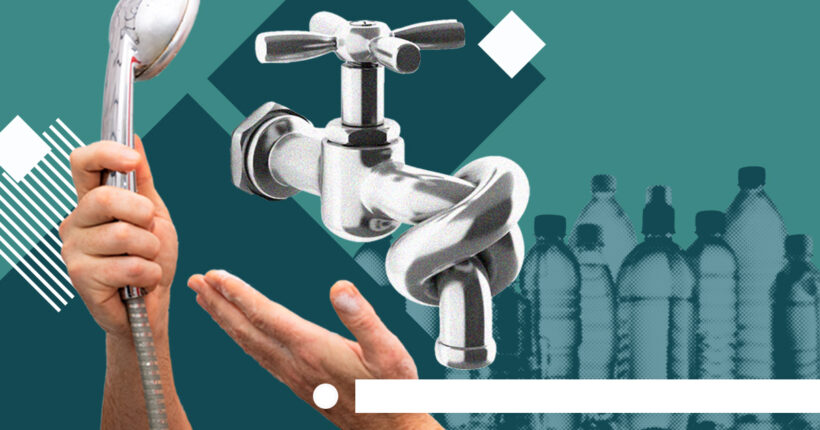
What is the problem?
Damage to civilian infrastructure has become a common part of the war. This way, russia wants to force Ukraine to negotiate and "ideally" to surrender completely. But despite their hopes, the enemy achieves only the opposite results — the Ukrainians' hatred of the occupiers only grows stronger, and people unite, support each other and learn to live in conditions where the elementary benefits of civilization become a luxury.
The recent blackout revealed an interesting thing: it is not as challenging to live without electricity as without water. Its absence in the big city quickly becomes a disaster. However, it is possible to survive in the city for a long time without a centralized water supply. For example, due to enemy shelling, Mykolaiv lost its regular water supply back in the spring, and in neighboring Kherson, whose water pumps were damaged by the russians during the retreat, people lived without water for almost a month.
Rubryka decided to find out what the authorities are ready to do to ensure water supply in critical situations and how each of us can prepare for a long-term lack of water in the city.
What are the soltions?
Why water disappears with electricity and where to find it in case of a new russian attack
Water supply and sewage pumping stations operate on electricity. So, during emergency power outages due to accidents or shelling, pumping stations can also stop working.
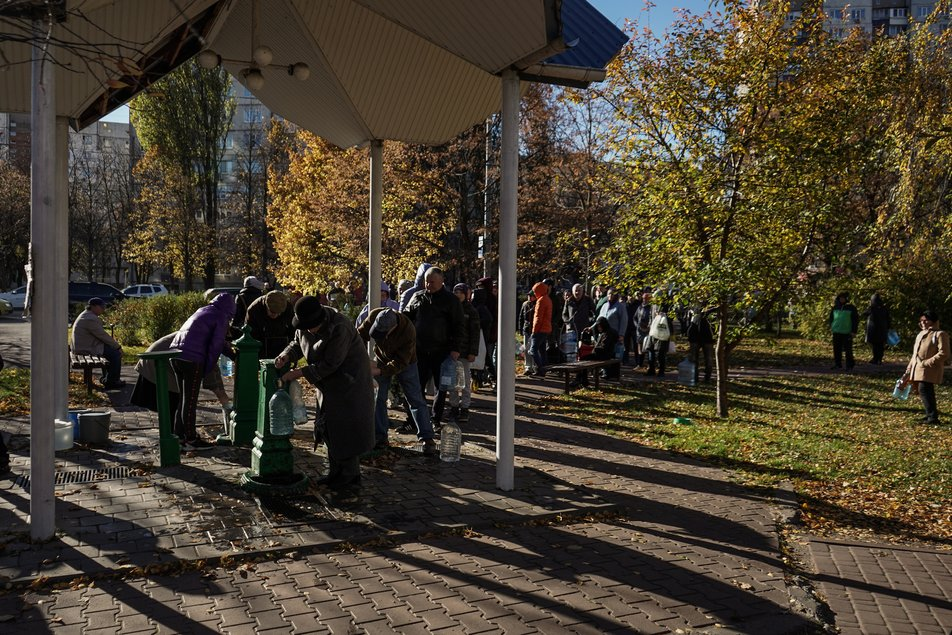
On October 31, due to a massive russian missile attack, 80% of Kyiv residents were left without a centralized water supply. The lack of electricity stopped not only the pumps of Kyivvodokanal but also the water supply to some of the pumps, in search of which residents of the capital came forward en masse. Where the pumps were working, long queues were instantly found. However, local authorities are already implementing solutions that will work in case of repeated attacks, emergency shutdowns and lack of water in cities.
- As Kyiv City Administration reported, now, in case of a critical situation, pump stations that can be turned off will be connected to generators. Preparatory work on the prompt switching of pump stations to generators continues. Pumping stations' addresses in Kyiv can be found on the map by following the link. At the same time, the Kyiv residents were warned that the pump stations would not be connected to the generators during the scheduled power outages.
In addition, more than 400 heating points have been deployed in Kyiv. According to the city head Vitali Klychko, the heating points will work daily. Most of them are arranged in schools and other city social institutions. There will be water and electricity, and some will have Internet access (detailed information about specific heating points of the capital can be found on the map. Map of Points of Invincibility in the Kyiv region – here). "If there is no electricity in your house for more than a day, you can come to the heating point to charge your gadgets or flashlights, drink tea, find out where the pump stations are, which shops and pharmacies are open," Vitali Klitschko commented.
- In Odesa, you can also stock up on water at public pumps. Water from wells is supplied free and available to every resident of Odesa. Currently, 13 pumping stations are operating in Odesa — their addresses were reported in the city council's press service.
- In Vinnytsia, a list of places where drinking water will be provided in the event of an accident has been created. The points will come into operation in an emergency in the city. Currently, Vinnytsia residents are advised to constantly maintain a water supply at home.
- Wells are being drilled on the left bank of the city of Dnipro. This is how the regional center adapts to emergency shutdowns of water supply. Five wells were drilled on the left bank, and 40 tanks with technical water were installed on the right bank. "They will not freeze because heating elements are installed there," the city council reports. Wells and water tanks are marked on the interactive map. Active points are green, and those where work is still ongoing are blue.
- The Sumy region is also preparing to work in conditions of a complete blackout. At an extraordinary meeting of the Regional Commission on Technogenic and Environmental Safety and Emergency Situations, it was decided that if there is no electricity, heat and water for a long time, then the "Points of Invincibility" should provide people with the minimum necessary for life. Tanker trucks with drinking water for Sumy residents will also run through the regional center.
- In Poltava, public street water collection columns were inspected. Poltavavodokanal published a list of places where, if necessary, it will be possible to collect water.
- In Ivano-Frankivsk, according to the city mayor, Ruslan Martsinkiv, a possible blackout may last several weeks. The mayor asks his compatriots to prepare for the worst scenario. "As for water supply, in the event of a power outage, water in multi-apartment buildings can only be supplied up to 2-3 floors. Therefore, fire hydrants will be opened in the city, and water will be drawn from them," he said.
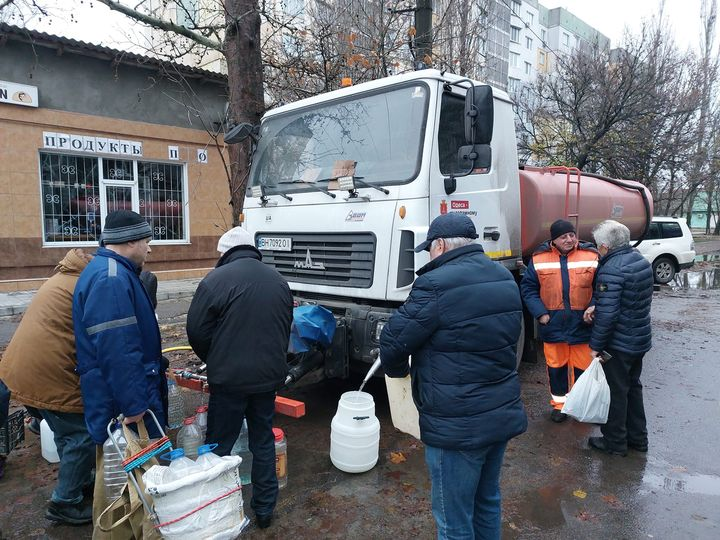
- The russian occupiers left Kherson completely without electricity, heating, and water. People, businesses, and churches with wells shared water with the townspeople. People collected water from the river in the areas near the Dnipro for technical needs. Currently, after a three-week absence, water is returning to liberated Kherson. After the electricity is connected, the Kherson waterworks restores the city's water supply daily. The company also delivers drinking water to areas with a shortage of it.
- Since mid-April, Mykolaiv has been living without a centralized drinking water supply, and technical water from taps is only suitable for toilets. The reason is the russians blocked a water pipe. All this time, residents of Mykolaiv learned about when and where the water trucks would arrive from publications in the local mass media, on the public pages of local government representatives, and in local communities on social networks. At the same time, the authorities began de-conserving and drilling new wells. Although there were more machines and wells every week, they were still not enough for a huge city; many had to go for drinking water several blocks away and for technical water — to collect with buckets from the river. And today, the situation with the water supply in Mykolaiv continues to be difficult. "We use water from our river, not from the Dnipro, for technical needs, but it is salty. The water pipeline from Kherson was never launched. When there is electricity, we will be able to repair it," Mayor Oleksandr Sienkevych said. In the meantime, the Mykolaivvoblteploenergo regional utility company has updated the list of working points for dispensing the purified water.
Will it definitely work?
We live in extreme conditions. The situation with power outages, and therefore water outages, can worsen at any moment. The authorities are even warning about the possibility of a new blackout — the complete blackout of cities for several days. However, even without this, we face uncertainty daily and need to be ready for new challenges. The main thing we can do in any case is not to panic and to have a clear algorithm of actions and adequate reserves to ensure our livelihood.
Yes, right now, it is important to find out where the nearest wells or pumps are from where you can collect water. Also, write down the addresses of pump stations, "Points of Invincibility," and water distribution points.
How to properly stock drinking and technical water?
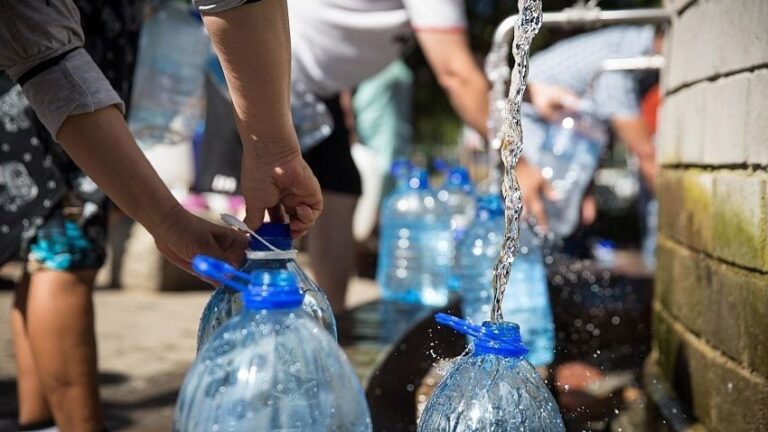
Create and maintain a water supply for you and your family for at least 72 hours. For a day, a person needs:
- 3 liters of drinking water (including liquid consumed with food);
- for children of primary school age, the Ministry of Health advises having a supply of 1-1.5
- liters of clean drinking water per day, and for older children – 1.5-2 liters.
- for hygienic procedures – 4 liters per day;
- for using the toilet, hand washing, showering, and other hygienic procedures 15-25 liters per day;
- if there are pregnant women, elderly people, and babies in your family, then it is worth doubling the numbers, and it is better to focus on the needs of a specific person.
What is the best way to store water?
- Collect it in a container made of food plastic or stainless iron;
- use transparent containers;
- store water in a dark room where there is no exposure to low temperatures or chemicals;
- closed containers should be labeled "Water for drinking," "Water for technical needs," and "Water for household needs."
You can store water:
💧technical – for several months;
💧drinking water – for several days (it is better to boil it afterward).
It is also important to understand that if you are going to store water for longer than 6 months, it needs to be purified. If you cannot do this, consider that after the specified time, you will have to change it.
Methods of water disinfection
Not all water you collect will be potable, especially if it has been stored for a long time. There are several effective methods to purify water and then use it for drinking or cooking.
- Boiling
Boiling is the most reliable way to disinfect water in survival conditions. Boil the water for 10 minutes, then let it settle and carefully drain it, avoiding sediment getting into a new vessel. The longer you boil the water, the more pathogens will be killed. Boiled water should be stored in a closed container. If possible, the settled boiled water should be additionally purified using a water filter. - Tablets with active chlorine
There are special preparations containing active chlorine in the form of tablets that will help purify the water yourself. Such tablets have antibacterial properties and long shelf life. 30-60 minutes of waiting — and such water can be consumed. The main thing: carefully study the instructions and correctly calculate the number of pills per volume of water. - Activated carbon
The method allows you to remove the unpleasant smell of water and minor impurities, and harmful substances. You need to add five crushed tablets per liter of water (to increase the active area). Crushed coal should be wrapped in gauze or other cloth so that dust from it does not get into clean water. Disinfection of water in this way lasts at least eight hours. - Freezing
Place the container of water in the freezer or leave it outside until it is 2/3 frozen. Drain the water that has not frozen from the tank because it contains salts that slow down the freezing process. Thaw the remaining ice — it will be clean water. - Silver
Regular silverware or silver jewelry can also purify water. In order to purify water with silver, you need to throw any silver object — a spoon, ring, or any other thing — at the bottom of the container and leave it overnight. During this time, silver ions provide water purification.
How to consume meltwater?
Rainwater or meltwater from snow can be dangerous because it washes salts from the body. To improve it, survival instructors in extreme conditions advise adding a quarter of a teaspoon of soda, the same amount of salt, and a tablespoon of sugar to one liter of rainwater or snow.
But the townspeople are unlikely to be able to "get" technical water from the heating system in a critical situation. Klitschko also announced at the Kyiv city hall that if the capital continues to be shelled, and if the outside temperature is -5°C, and there is no heating and water for 24 hours — it will be necessary to "drain" the city's heating systems. This is done so that the water in the heat supply system does not freeze and burst the pipes. Kyiv's mayor called on Kyiv residents to have a supply of technical and drinking water, a supply of long-term storage products, warm clothes in case of a complete blackout, and to inform about the possibility of temporary travel outside Kyiv.
Even more useful solutions!
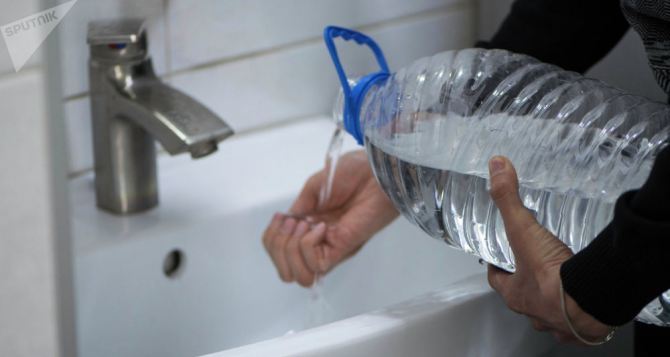
Mykola Ilyinov, the board chairman of one of Irpin's condominiums, shared his experience living in extreme conditions without water. In his opinion, a potential blackout situation could be very similar to the one he had to live in this April. Then he returned to the de-occupied city to restore the damaged house.
"The body adapts to everything," the man says. — We had 5 liters of drinking water for two or three days for the two of us — and it was enough to drink a glass each in the morning and drink tea and coffee during the day. For dinner, we usually ate hot food — soup, borscht — cooked outside on an open fire. We used to have a place where about 20-30 people from the entire residential complex (7 buildings) gathered in the evening to eat together and discuss current problems. Literally, after a few days, the neighbors brought a lot of water — they collected it from local wells and put it directly in tubs in the entrances so that everyone who needed it could take it."
Even before the start of the full-scale war, Mr. Mykola asked his neighbors not to throw empty water jars but to put them at the entrance, and he agreed with the janitor that he would collect them, fill them with water, and put them in the basement. Therefore, he advises: if there is not enough space in the apartment, accumulate and store water in the halls. It is also possible to raise issues in condominiums regarding installing large water storage tanks in basements.
Mykola Ilyinov also reminds us to use wet wipes — antibacterial ones are suitable for hands, and "gentler" ones for washing the face. And adds:
"By the way, don't forget about the animals. We wash our dog's paws after every walk, and when there is no water, we wipe them with wet wipes. Therefore, get a lot of wet wipes."
In addition, the man washed the floor every morning: "I just felt sorry for flushing the toilet with clean water, so I first washed the floor and then flushed it. I washed it with a small amount of water, adding a few drops of "Domestos" each time. In total, up to 10 liters of technical water was enough for my daily needs, even if I washed my head."
Several useful life hacks offered by Wikihow will allow you to save water supplies:
- You can wash your head with very little water — three glasses of water are enough. To wash your hair, you need to dissolve soda in hot water: three tablespoons for three glasses of water. Moisten the hair with this mixture, comb, then repeat and wrap in a towel. For rinsing, pour several glasses of water into a small basin to rinse the hair from the soda mixture.
- To wash the body — 1 teaspoon of soda is enough for three glasses of hot water. Rub the body with the mixture, often rinsing the cloth. A "dry shower" — a soapy sponge that does not need to be washed off — can eliminate serious pollution.
- Wet wipes or dry hair shampoo will also help keep you clean. If you don't have it, you can use starch — apply a little more than a teaspoon on the hair and comb it well. In addition, it is worth using natural deodorants and not wearing too tight clothes so as not to sweat.
This material was created by the online media outlet Rubryka within the framework of the "Ukrainian Rapid Response Fund" program, implemented by IREX, with the support of the US State Department. The content is the sole responsibility of the Rubryka online media outlet and does not necessarily reflect the views of IREX or the US State Department.







